
Career Paths
The career path program, as defined by our human resource system, will serve as a guidepost for you to plan your future after joining the company. Under KKE's career path program, what kind of experience can you have? And in what roles can you grow? Two of our staff members shared their stories.
PROFILES

YONEYAMA, Teruhiko
【Grade L】
The Innovative Information Technology Department, Manager
Joined KKE in 2011.
Graduated from the School of Engineering, Rensselaer Polytechnic Institute,
USA Majored in multidisciplinary science

INO, Shinji
【Grade P】
The Social Systems Design & Marketing Department, in charge of marketing.
Joined KKE in 2008.
Graduated from the Graduate School of Engineering and Design, Hosei
University Majored in construction engineering
Career paths at KKE
KKE has adopted a multi-track human resource system. The multi-track human resource system is a system that offers not only promotion to managerial positions but multiple career paths (system with grades) in order to respond to the diversification of staffs' work styles and characteristics. In this system, lower graders are evaluated with an emphasis on processes such as the attitude toward work rather than the output, and the higher the grade, the greater the responsibility for producing results.
After our staff members join the company, starting from Grade J1 (Junior 1), they work while receiving directions & instructions from higher grade staff members to solidify the basics such as how to process work. Then, when they are promoted to Grade J2 (Junior 2), they will be required to systematically carry out the given tasks and responsibilities on their own while obtaining some cooperation from higher grade staff members. In addition, they will provide guidance to junior staff members as a good advisor for lower grade staff members. At KKE, the J grades up to this level are considered to be the training stage.
The next step is the S grade (Senior). At KKE, the staff who has completed the training stage has a status of being “fully qualified,” and is expected to play a central role in leading projects to success, managing teams, committing to the development of junior staff members, etc.
After that, the carrier path splits into two: Grade L (Leader) and Grade P (Professional). Both will have more advanced requirements for their roles and behaviors, and compensation will be more generous. Grade L staff is required to deliver business results while demonstrating leadership and enhancing the value of the organization. Grade P staff aims to create new businesses and acquire more knowledge in their field of specialization as an industry leader through a profound investigation of the knowledge in their field of expertise.
Either way, each of our staff members will have a self-motivated career as he/she pursues the themes, goals, and dreams that he/she is interested in.
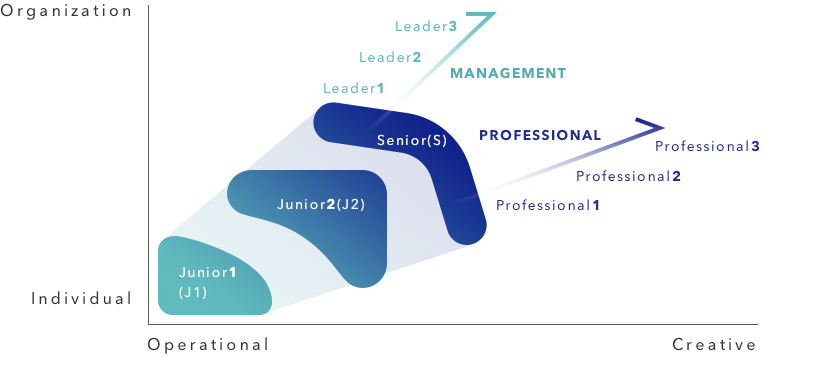
Career path differences
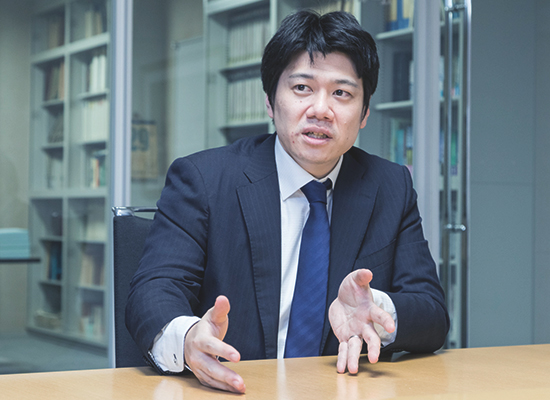
- YONEYAMA
- When I look back on my J1 period, it was a time to solidify the basics. I acquired knowledge in specific fields deeply related to our services, which in my case included such basic knowledge as “traffic engineering” and “human behaviors at the time of disaster” as well as simulations to which the knowledge in such fields was applied.
- INO
- I agree. For me too, it was a period during which I got to know the field and the basics of my work as an engineer. Back then, I was working on the task of “evaluating the soundness of energy facilities by physical simulation.”
- YONEYAMA
- When I was promoted from J1 to J2, I was required to demonstrate management skills as a leader for medium to large scale projects. Even during the J1 period, I was required to contribute to the advancement of projects, but I began to do more work as a key player involving coordination with clients and internal/external stakeholders.
- INO
- Good point. In my case, I began actively collaborating with other departments. Also, I personally regard this period as a step to establish the themes that I wanted to focus on. I worked on the operations across the organization while cultivating the knowledge about energy supply chains, which has led to my present condition.
- YONEYAMA
- The change from J2 to S was even bigger. In addition to working steadily on projects, I was required to create projects own my own. I was required to find unsolved issues from the past clients I had met and things related to their cases, create projects, and provide solutions.
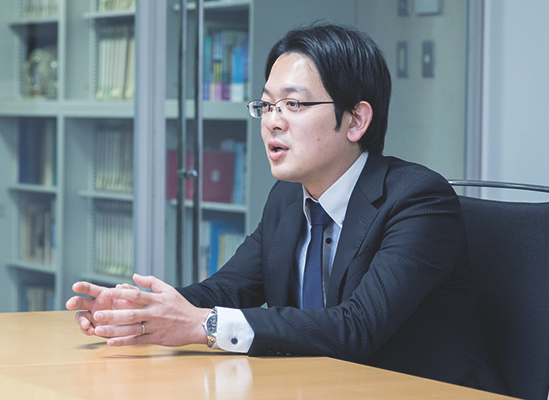
- INO
- At KKE, the roles and skills required for J through S and all other role grades are mapped out so that we can identify what we lack in each stage. Therefore, I think that KKE offers an environment where everyone can grow proactively, saying "that’s my next step."
- YONEYAMA
- In terms of growth, in my career, the experience of working in an external organization was another opportunity for my growth. I worked there for roughly two years, but working with people in various occupations was a great learning experience. So, during the S period, opportunities for receiving such external stimuli also increase.
- INO
- After S, we step up to either L (leader position) or P (professional position), but in my case, there was no strong awareness that “we were being divided into two.” This is because our system offers not only the value of "progressing with the focus on a course suitable for oneself," but also the great value of being able to "stretch one’s career" so that one can grow while adjusting the contents of work according to one’s situations. Currently, I am involved in the marketing of energy-related themes as a P, but when there is an opportunity to commercialize the themes I have developed, there should be situations where I work as an L.
- YONEYAMA
- I’m with you. I am following the L course now, but that doesn’t mean I will keep being specialized in management forever, but it is likely that there will be some time when I say, “I want to work as a P to leverage my expertise as a weapon” depending on my interests and circumstances. I think that having a flexible career path that can incorporate such preferences is a very good thing for individuals and the organization.
Beyond career paths
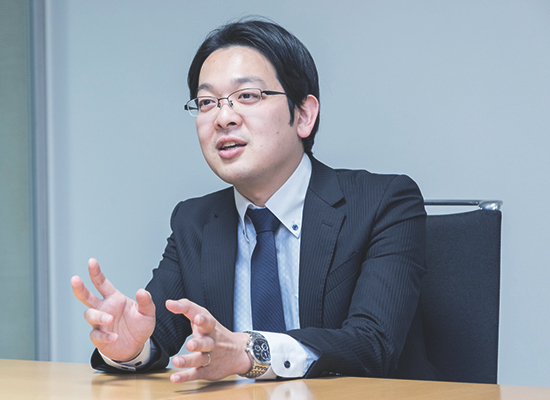
- YONEYAMA
- At KKE, we are required to extend our vision farther and farther through our career. During J1, we need to align our sight with that of the customers. We focus on delivering projects that meet the requirements for quality, cost and schedule, as we communicate with the customers. When we advance to J2 and S, we look beyond our customers, asking “what do the customers want to do with what we offer?” And when we step up to P and L, we work by “looking ahead,” asking “what value can we provide to society with what our customers are doing and how can we contribute?”
- INO
-
At KKE, an internal review is conducted for promotion from J to S. During the review, we are asked not only to tell what we have done so far but, as mentioned in Mr. YONEYAMA’s story, to present with strong commitment “what we’re going to contribute to in the future.” However, self-centered intentions are unacceptable, and we should communicate with words and values that anyone who listens can resonate with.
So, Mr. YONEYAMA, could you tell me how, as a leader, you are “looking ahead” now?
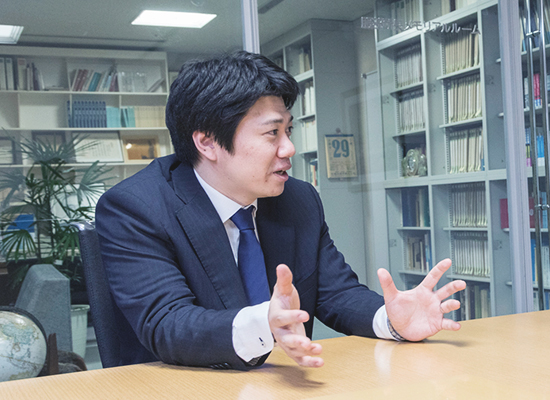
- YONEYAMA
- From the perspective of “the world can get better,” which is actually the mission of our department, I would like to create a unique engineering consulting team that proactively identifies challenges of our society to actually present ideas and make improvements. To that end, I think, it is important for all members including myself to continuously acquire advanced skills as engineers and to have unique ideas and points of view.
- INO
- Looking ahead, I think that I want to work on a role model project that leads to the realization of a sustainable society in the energy field where I have been working on marketing strategies. In the future, as the social environment changes and technology evolves, works we have done will probably not remain as they are. However, in the environment KKE provides, I think that I should surely be able to work on projects that provide values for the future by “connecting achievements of our predecessors and challenges of young people who will lead the next generation.”



